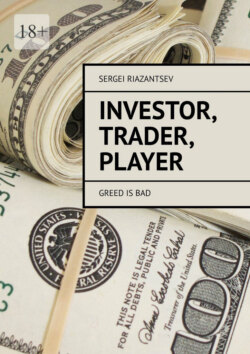Читать книгу Investor, trader, player. Greed is bad - Sergei Riazantsev - Страница 4
Art or science
ОглавлениеImagine yourself a multiplication table that is constantly changing, right before your eyes. This morning two times two is four, after lunch it’s already five, and tomorrow it’s three at all. Absurd? Beyond any doubt.
Because real science is always relatively stable. It has strictly defined laws, and even while constantly developing, it is still based on fundamental knowledge. Like a multiplication table in mathematics or a periodic table of elements in chemistry.
There is nothing like this in trading.
And although it looks very similar to science, there are no cyclical or repeatable phenomena in stock trading, it is a chaotic system. To study which is certainly possible and necessary. It is impossible only to deduce strict laws and exact formulas.
Although, of course, it would be nice: I opened the directory, inserted the necessary numbers into a mathematical equation, deduced future prices up to a tick – and you can go to the Swiss bank. To store the earned millions. Or billions?
However, it doesn’t matter, all this is nothing more than our fantasies.
Financial markets operate in conditions of constant uncertainty. Try to listen carefully to the analysts: their speech is simply peppered with expressions “perhaps”, “most likely”, “suppose”. There are only probabilities in this business.
Don’t count on more.
And when a certain market “guru” begins to confidently argue “the price should… because now the third sub-wave of the fifth Elliott wave… the Ichimoku cloud of the right shape… oversold exceeded overbought” – know that this person is lying. The price doesn’t owe anyone anything. And you will never be able to calculate the price for tomorrow or next week on a calculator. This is impossible by definition.
As Benjamin Graham (Warren Buffett’s teacher) wrote in 1949:
The combination of precise formulas with very inaccurate assumptions makes it possible to obtain, or rather justify, almost any desired value…
People who tend to blindly trust the scientific approach and linear logic will be greatly disappointed by the market.
Let’s recall the relatively recent history of one of the largest hedge funds Long-Term Capital Management (LTCM). The off-balance sheet positions of this fund in 1998 exceeded $1 trillion, which is more than the national budgets of many countries and entire continents. Along with the “stars” of trading in those years, two Nobel Laureates in economics – Myron Scholes and Robert Merton – worked at the fund at once. Not counting hundreds of mathematicians, traders, and programmers less well-known to the general public.
The company was proud of its scientifically based risk management system and trading strategies. The luminaries of financial science seemed to have accurately calculated and foreseen everything. We will not “load” the reader with the laws of linear extrapolation, convergence of spreads and other complex mathematical wisdom on which their confidence was based.
Let’s just say that after several successful years and good annual profit figures, the market just smeared them on the asphalt. Neither formulas, nor powerful computers, nor the smartest scientists helped. Why?
Because trading is not a science in the strict sense of the word. Rather, art with elements of science. However, this does not prevent us from making money on the market. It’s even more interesting this way.
